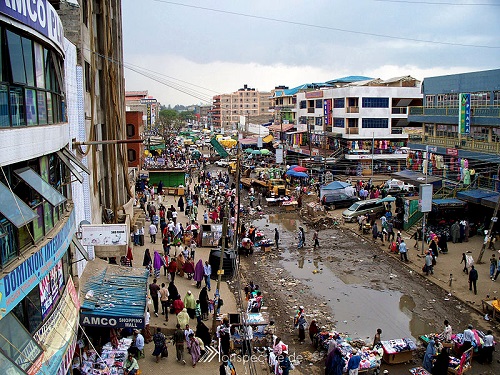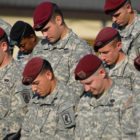
April 6, 2015; Global Voices
Writing for Global Voices, Ndesanjo Macha reminds all of us about the relatively muted world response to the Al Shabaab killing of at least 148 people at Garissa University College in Kenya on April 2nd. The Sub-Saharan Africa editor for Global Voices, Macha notes the international outrage after the Charlie Hebdo killings in Paris but much less active international response to the Garissa massacre or similar mass killings by Boko Haram in Nigeria.
In the U.S., news coverage hasn’t helped. Paris is familiar to many Americans, while Kenya is not—apparently not even to CNN, which reportedly showed a map of East Africa that placed Nairobi, Kenya’s capital, in Nigeria, and somehow managed to move the country of Tanzania into Uganda. Is it simply the numbers of people killed in Nigeria or Kenya or, for that matter, by ISIS in its devastating attack and siege of the Palestinian refugee camp in Yarmouk that make these horrors too much to fathom? Or is it, sad to say, related to the fact that the victims of these attacks are in many cases Africans or, in the case of Yarmouk, Arabs or Palestinians? They are peoples that the largely white populations of Europe and America have reduced to “othering,” to being populations whose behaviors and existence are somehow flawed and inferior. (See the late Edward Said’s book, Orientalism, for a detailed discussion of the process of “othering.”)
To humanize the victims, Kenyan activists are using the hashtag #147notjustanumber on social media, though it is so obviously depressing that it takes a hashtagged Twitter campaign to make the dead students at Garissa human enough to evoke needed reactions.
What about Garissa University College? Its “facts and figures” webpage presents a picture of a small college trying to provide technical skills to young Kenyans, which they would hopefully apply to “solving immediate societal as well as unforeseen problems.” GUC is a public university, established by an act of the Kenyan Parliament as a constituent college in the Moi University system, located in northeastern Kenya, further away from the capital, Nairobi, than from the border with Somalia where the Al Shabaab terrorists come from.
Where is the response from the wealthy social and philanthropic sectors of the West to the Garissa tragedy? The fundraising is hard to find. On Facebook, the Kenyan radio and television journalist, Uduak Amimo, posted on April 7th that contributions to the Kenya Pamoja Fund to benefit Garissa victims and families totaled 10 million Kenyan shillings (Kshs) each from Safaricom and the Kenya Commercial Bank, 5 million Kshs apiece from Coca-Cola and the National Bank of Kenya, and one million in pledges from the public. (As of April 9, 2015, those 31 million Kshs amount to about US$334,775.)
Sign up for our free newsletters
Subscribe to NPQ's newsletters to have our top stories delivered directly to your inbox.
By signing up, you agree to our privacy policy and terms of use, and to receive messages from NPQ and our partners.
Here’s what the Kenya Pamoja Fund for the Garissa attack victims and survivors, as well as families has raised so far…
Posted by Uduak Amimo on Tuesday, April 7, 2015
The Kenya Red Cross Society appears to be leading the fundraising for the Fund. Some international NGOs showed up on the scene to provide desperately needed assistance, including, as expected, Doctors Without Borders/Médecins Sans Frontières, which had a team in Garissa by April 4th, helping to treat the more than 70 wounded.
Now the need is not just for emergency relief, but the longer term assistance to rebuild the lives of the families of the dead and wounded—and to rebuild Garissa. For those who might have read Nina Munk’s devastating critique of the Millennium Villages project of Jeffrey Sachs, Garissa was the home base for Sachs’s program of assistance to the village of Dertu. Munk described Garissa as a “chaotic frontier town,” which doesn’t make it seem like a place well equipped for the aftermath of the Al-Shabaab attack or the fears that such might be repeated.
For international donors, perhaps Garissa is just one more horrific incident that defies rational response. Or perhaps Garissa fades from view because of the “otherness” of the victims and their families. The problem is not just CNN’s inability to accurately locate Nairobi on a map of East Africa, but of many people being unable to see the victims of the Garissa tragedy as enough like them to warrant action.—Rick Cohen











